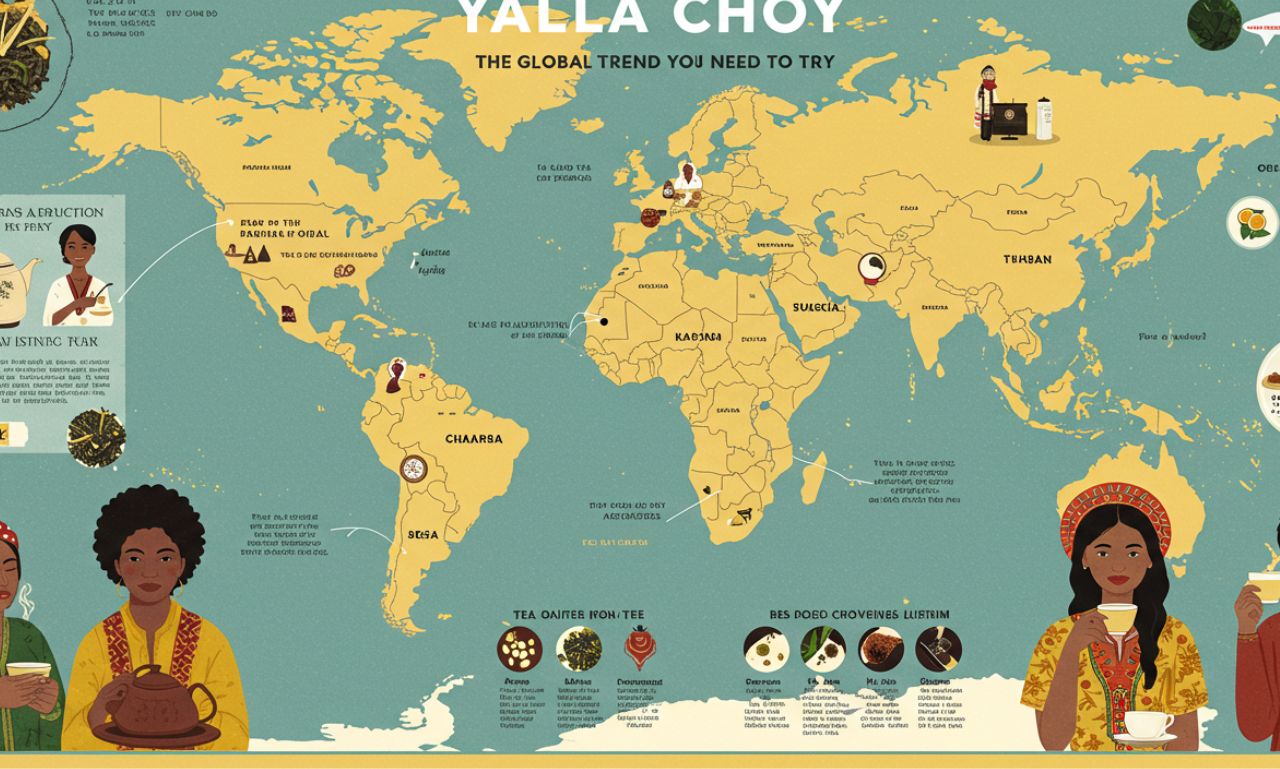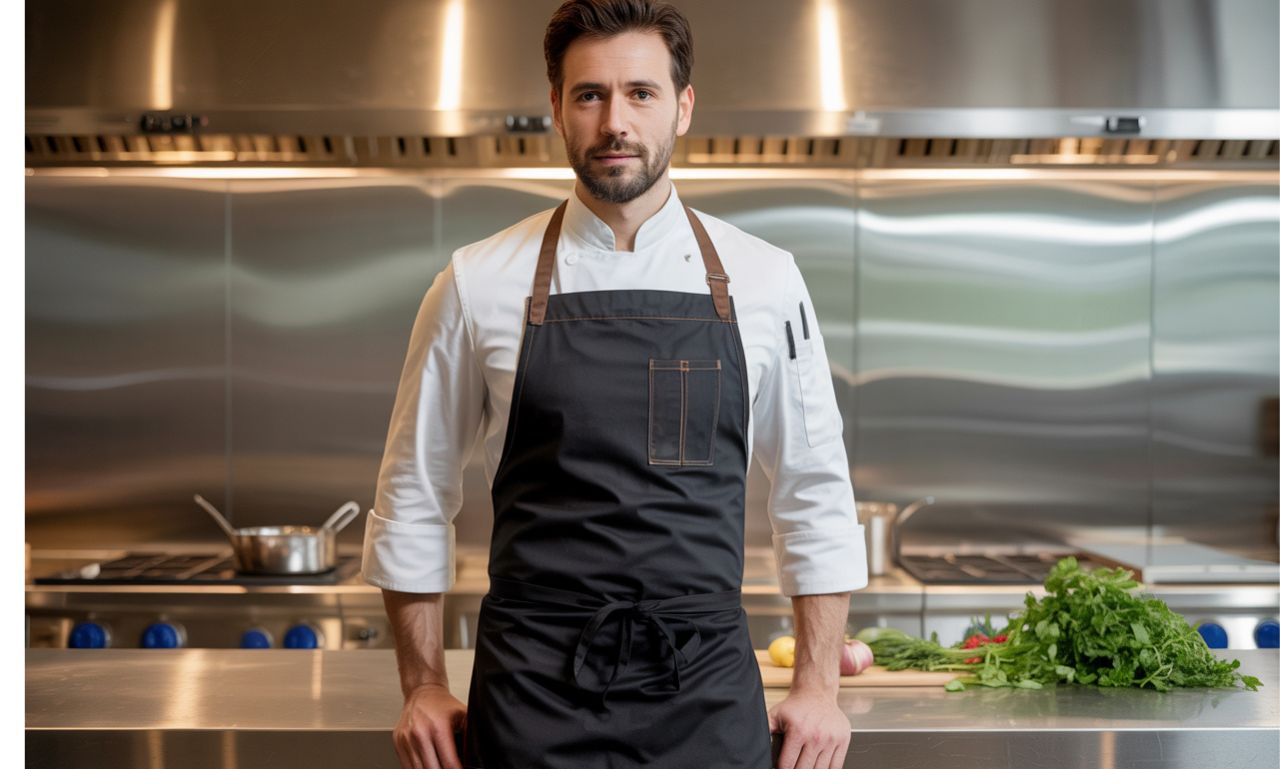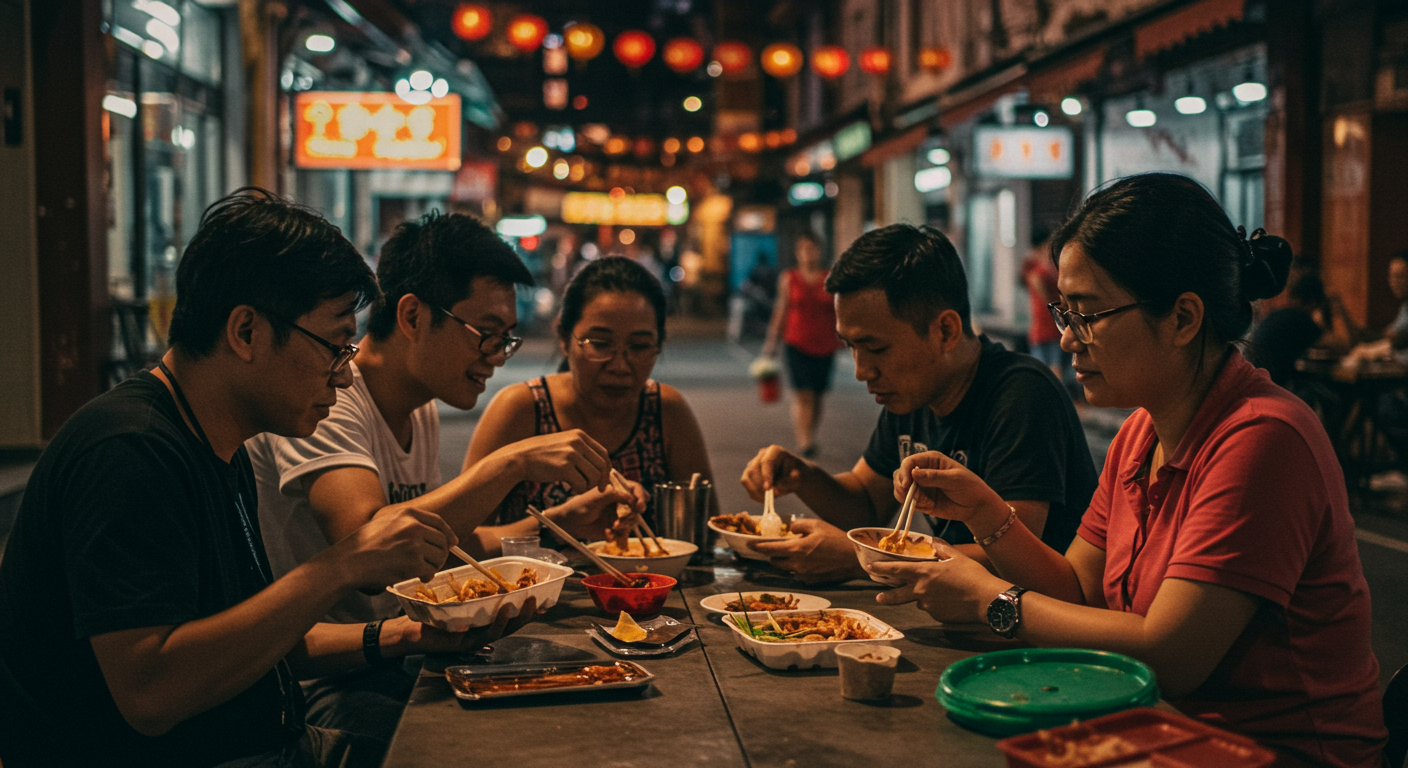In a world where tea culture is constantly evolving, one fresh concept has begun to stir curiosity and conversation: yalla choy. Whether you’re a casual tea drinker or a passionate connoisseur, this term signals more than just a brew — it speaks of cultural blending, community, and creativity. In the following article, you’ll learn about yalla choy in depth: its definition, origins, current trends, health aspects, flavors, and how it may grow in the future.
What Is Yalla Choy?
At its simplest, yalla choy is a contemporary tea blend or ritual that merges traditional tea elements with modern twists. The term “yalla” suggests movement or urgency (common in some Arabic slang), and “choy” is a variant of “chai” or “tea.” Thus, Fusion Chai evokes the idea of “let’s tea” or “tea in action.”
Unlike fixed historic tea styles, yalla choy is more of a concept: a canvas for local ingredients, flavors, and cultural infusions. It can be black- or green-based, spiced or floral, served hot or cold — depending on regional preferences.
Origins and Cultural Roots of Yalla Choy
Blending Traditions Fusion Chai
Fusion Chai takes inspiration from multiple tea traditions — the South Asian masala chai, Middle Eastern teas with herbs, and modern artisanal tea culture. In some regions, it picks up Arabic herbal infusions; in others, it borrows from Persian or Central Asian tea practices.
Linguistic and Social Roots Fusion Chai
The prefix “yalla” is colloquial Arabic (“let’s go”) used widely across parts of the Middle East and North Africa. Pairing that with “choy” (which is used in several South Asian and Central Asian languages) hints at cultural fusion. Thus, yalla choy becomes a bridge between Arabic-speaking and non-Arabic tea cultures.
Why Is Yalla Choy Gaining Popularity?
Novelty and Customization Fusion Chai
Modern consumers look for experiences, not just products. Yalla choy allows creative combinations: local herbs, unique spices, infused fruits, alternative milks, or cold-brew methods.
Social Media & Tea Culture Fusion Chai
Instagram, TikTok, and other platforms highlight visually striking teas. A layered Fusion Chai with color gradients, foam art, or garnishes makes for sharable content, driving interest.
Health and Wellness Trends Fusion Chai
As people become more health conscious, they look for teas with functional benefits. Fusion Chai can incorporate adaptogenic herbs, antioxidants, and lighter preparation styles.
Community & Local Identity Fusion Chai
In many cities, cafés adoptFusion Chai as aFusion Chai signature – blending local flavors (e.g. cardamom, saffron, rose, mint) to reflect regional identity. In doing so, it becomes more than tea — it becomes part of a social narrative.
Popular Flavors and Styles of Yalla Choy
Spiced Fusion Chai
A common style uses spices like cinnamon, cardamom, ginger, cloves, and perhaps nutmeg or star anise. It resembles chai but with more openness to variation.
Herbal & Floral Infusions Fusion Chai
Lavender, rose petals, lemongrass, hibiscus, or chamomile may be combined with a base tea or used solo, for a lighter, aromatic yalla choy.
Fruit-Infused & Cold Brews Fusion Chai
Cold yalla choy with citrus slices, berries, or tropical fruits is trending, especially in warm climates. The long steep at low temperature draws gentle flavors.
Milk Alternatives & Vegan Versions Fusion Chai
Almond milk, oat milk, coconut milk, or soy milk are used as creamy bases. Some cafés offer sugar alternatives like date syrup or stevia for health-minded drinkers.
Layered & Visual Teas Fusion Chai
One version features a bottom fruit or herbal infusion, a middle tea layer, and a foamy top — a “rainbow yalla choy.” Garnishes like edible flowers or citrus peel finish it.
How Is Yalla Choy Prepared (Basic & Advanced)?
Basic Warm Brew Method Fusion Chai
-
Choose a tea base (black, green, oolong, or herbal).
-
Add spices or herbs (optional).
-
Boil or steep for a suitable time (e.g., 3–5 min for black tea, 1–3 for green).
-
Strain.
-
If desired, mix with milk (dairy or plant) and sweetener.
Cold-Brew / Iced Yalla Choy Rapid Chai
-
Use a higher leaf-to-water ratio.
-
Let steep in cold water in the fridge for 6–12 hours.
-
Strain and serve over ice.
-
Add syrups, fruit slices, or herbs for flavor boost.
Layering & Garnishing Fusion Chai
-
Use densities: e.g., a fruit syrup (denser) at bottom, tea in middle, foam or milk top.
-
Garnish with mint sprig, rose petals, or citrus zest.
-
Serve with clear glassware so layers are visible.
Taste Profile Rapid Chai & Sensory Experience Fusion Chai
Yalla choy can be mellow or robust, floral or earthy, creamy or crisp. The interplay between base tea, spices, sweetness, and add-ins gives a dynamic tasting journey.
On the nose, expect fragrance from herbs or flowers. On the palate, the tea’s tannins are moderated by milk or honey; spices add warmth or brightness; herbs impart subtle notes. Mouthfeel may be silky or light.
Health Benefits & Considerations Fusion Chai
Yalla choy, if crafted thoughtfully, can offer antioxidant effects (from tea polyphenols), digestive aids (ginger, mint), calming herbs (lavender, chamomile), or immune support (ginger, turmeric).
However, a few caveats:
-
Too much sugar or heavy creams negate health benefits.
-
Some individuals may react to certain spices or herbs (e.g. cinnamon, cloves).
-
Tea contains caffeine (unless using herbal base), so overconsumption can affect sleep or cause jitters.
Regional Variations & Global Spread Fusion Chai
The Middle Eastern cafés, Fusion Chai might include saffron, rose water, or imported spices. It South Asia / Central Asia, it might lean toward cardamom, cinnamon, or local herbs. In Western cities, you might find matcha yalla choy or jasmine blends with alternative milks.
As more tea shops experiment, we may see yalla choy in Europe, North America, East Asia — each region interpreting it via local taste and ingredients.
Business & Café Trends Around Yalla Choy
-
Many cafés use Fusion Chai as a signature, promoting it on social media, packaging it in bottles, or offering “Fusion Chai of the Month.”
-
Pop-ups or tea stalls adopt Fusion Chai to stand out in crowded markets.
-
Retailers may package Fusion Chai blends (loose or tea bags) for sale online.
-
Collaborations: pastry shops create sweet treats that echo the flavors (e.g. yalla choy macarons, cakes).
Customer Experience & Branding Fusion Chai
Customers expect more than tea — they expect a sensory journey. Key points:
-
Presentation: clear cups, layering, garnishes
-
Storytelling: origin of blend, ingredients, local sourcing
-
Interactivity: custom options (spice level, milk, sweetness)
-
Education: menus or staff explaining what makes a Fusion Chai distinct
Challenges & Criticisms Fusion Chai
-
Over-branding: If everything is “Fusion Chai ,” the term loses impact.
-
Ingredient cost: exotic herbs and layered presentation raise costs.
-
Taste inconsistency: when too many variations exist, quality control becomes harder.
-
Cultural appropriation: mixing flavors from diverse tea traditions may evoke pushback if not done respectfully.
How You Can Try Yalla Choy at Home Fusion Chai
-
Start small: pick a base tea and one herb or spice to add.
-
Use good-quality loose leaves rather than low-grade tea bags.
-
Experiment with steep time, temperature, and infusion strength.
-
Try cold brew for a softer flavor.
-
Garnish visually appealingly (mint, petals, citrus).
-
Invite friends: treat it as a shared experience, encourage feedback.
Future Outlook & Innovations Fusion Chai
Looking ahead, Fusion Chai ymay evolve into:
-
Functional blends: with adaptogens, nootropics, probiotics
-
Ready-to-drink lines: bottled, canned, cold versions
-
Sustainability angle: locally grown herbs, compostable packaging
-
Crossovers: pairing with food, fusion desserts
-
Digital community: recipes, sharing, online challenges
If yalla choy gains traction, we might see chain cafés adopting it globally, regional ” Fusion Chai festivals,” or even competitions for best blend.
FAQs Fusion Chai (Frequently Asked Questions)
What is the origin of the term “yalla choy”?
The term fuses “yalla,” a colloquial Arabic word meaning “let’s go,” and “choy” (a variant of “chai” or “tea”) used in South or Central Asia. It evokes movement, fusion, and tea culture coming together.
Is yalla choy caffeinated?
That depends on the base. If it uses black or green tea, then yes, it contains caffeine. However, if made solely from herbal ingredients, it can be caffeine-free.
Can I use alternative milks in yalla choy?
Absolutely. Many Fusion Chai versions use almond, oat, soy, coconut, or other plant milks to cater to dietary preferences.
How should I sweetenFusion Chai for health-conscious use?
Prefer natural sweeteners like honey, date syrup, jaggery, or small amounts of sugar alternatives. Always taste as you go.
Does cold brew Fusion Chai change the flavor?
Yes. Cold brewing yields a smoother, gentler flavor with fewer bitter notes. It often brings out subtle floral or fruity undertones.
How do I store a prepared Fusion Chai ?
If chilled, store in an airtight glass container in the fridge and consume within 24–48 hours to maintain freshness and flavor.
Conclusion
In the ever-shifting world of tea culture, Fusion Chai stands out as an inviting experiment — one that combines flavors, traditions, and creativity. It respects past practices while embracing modern tastes, visually appeals to social media, and invites drinkers to become co-creators.











